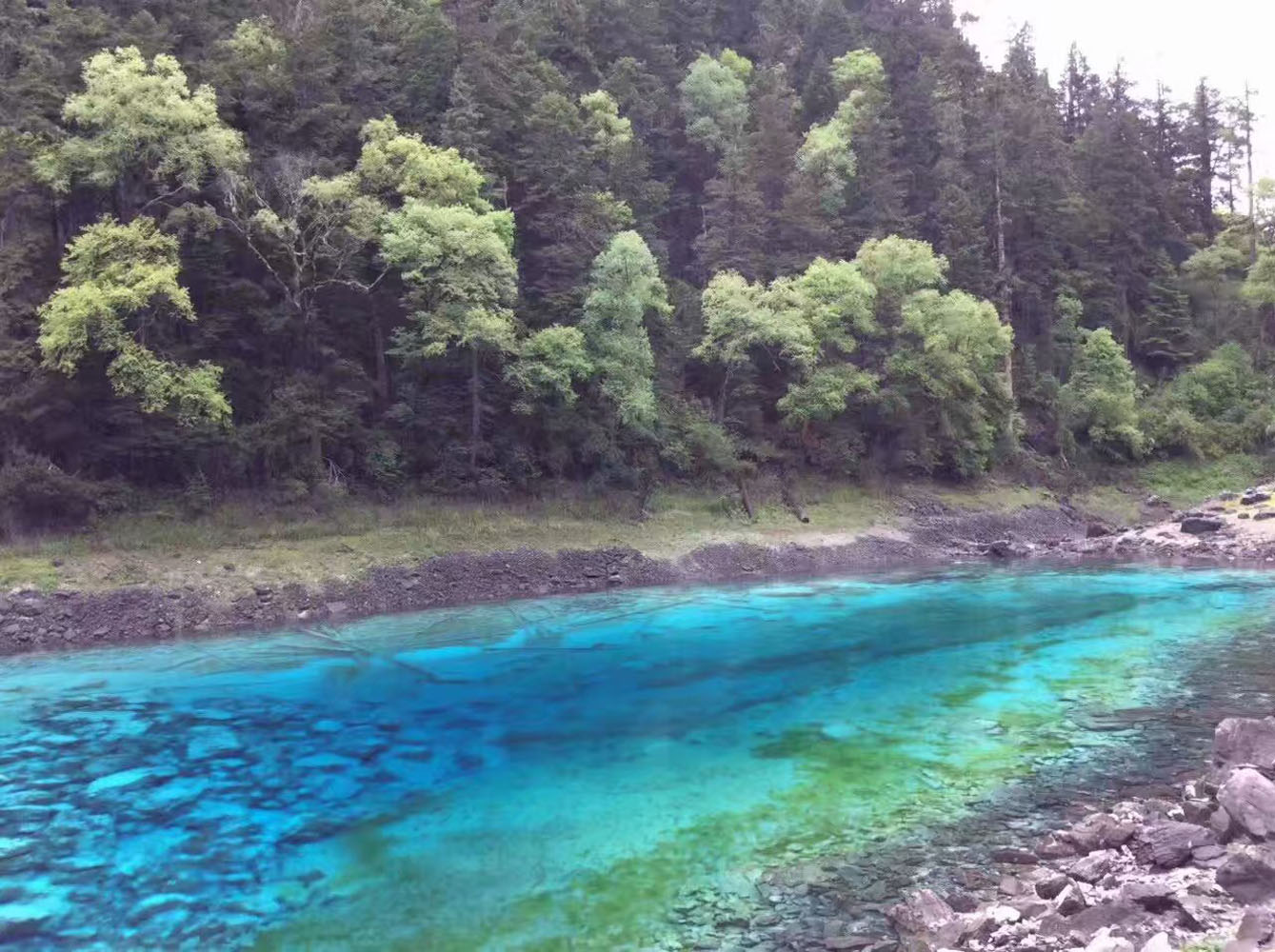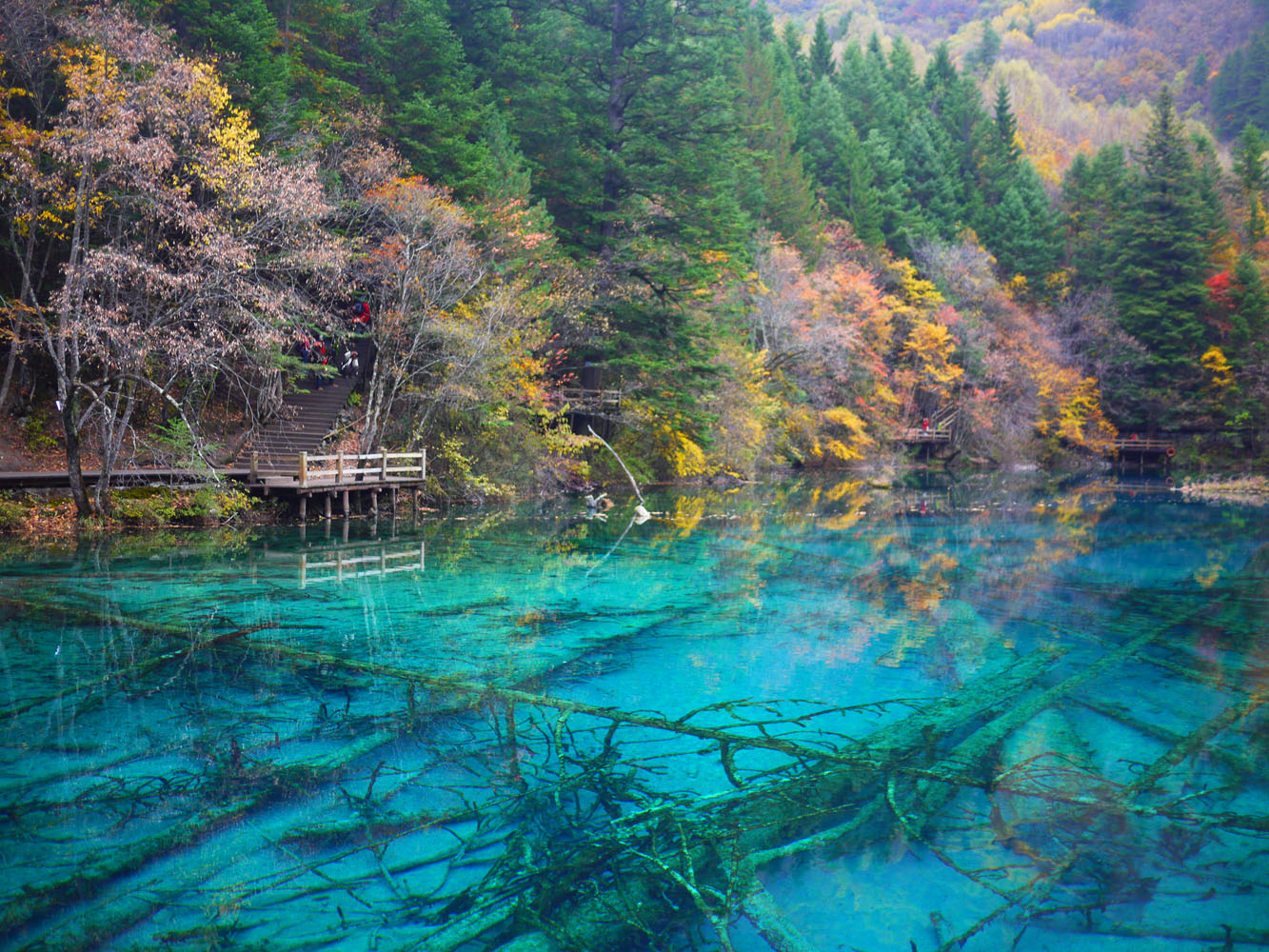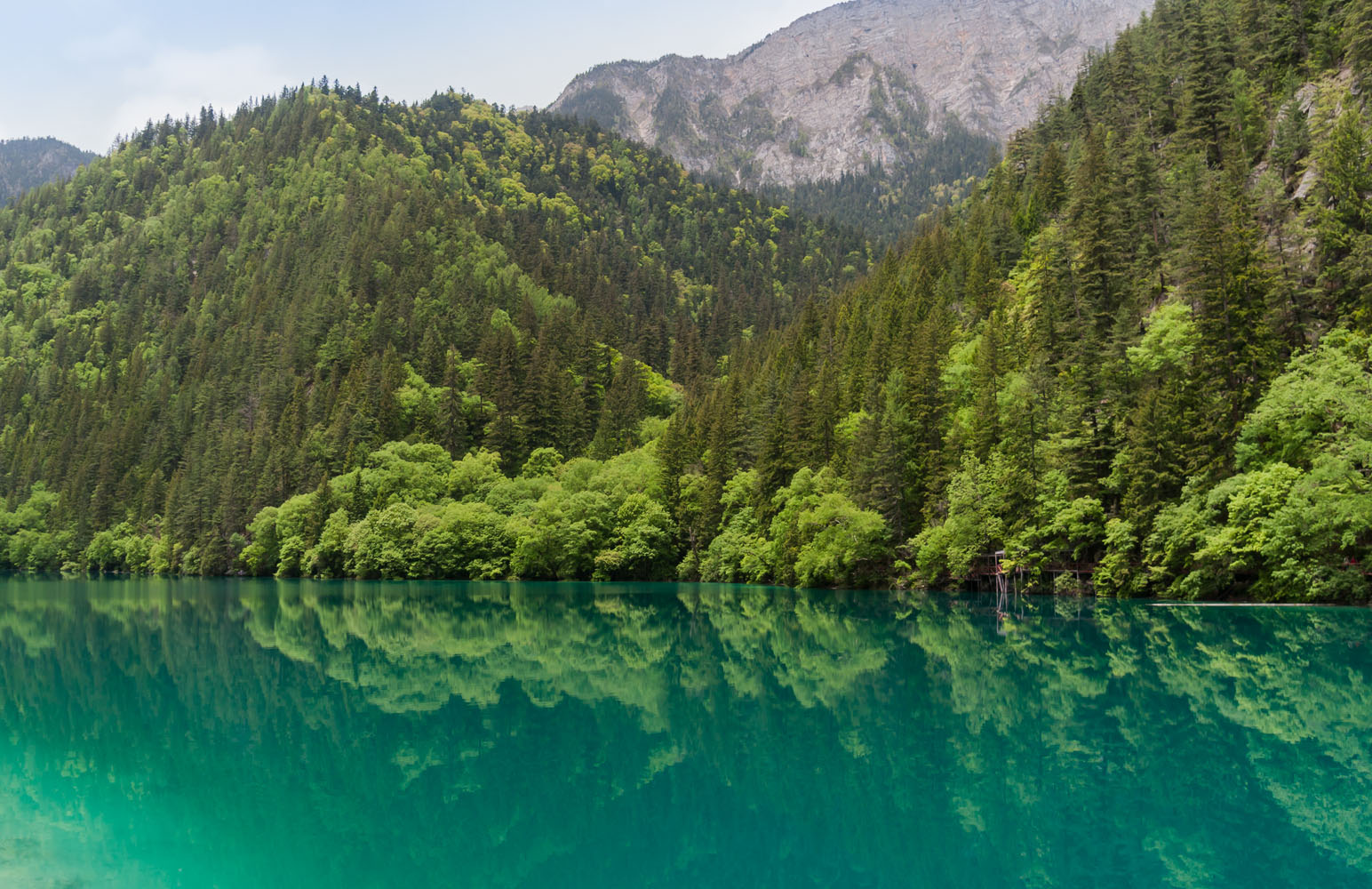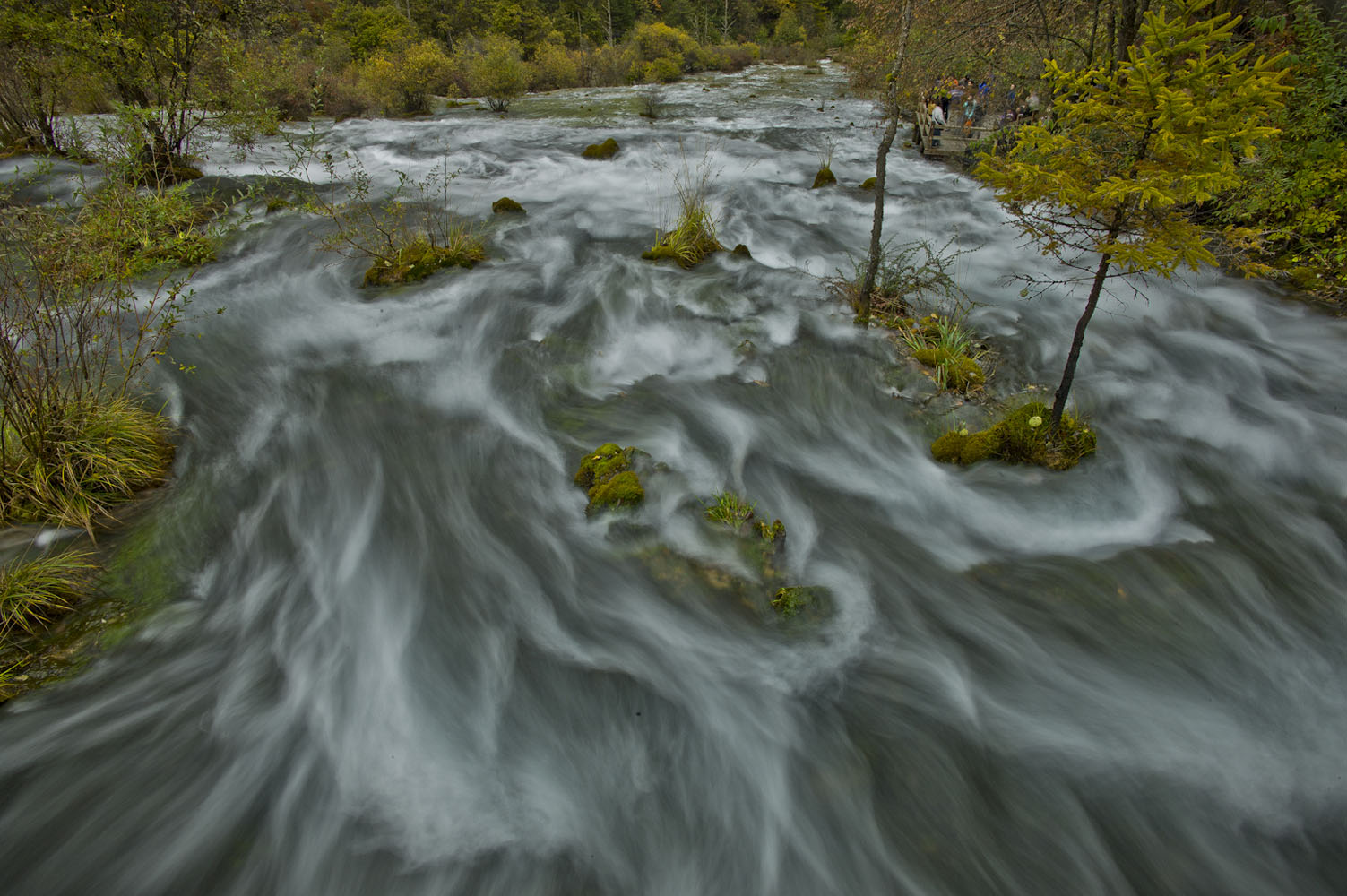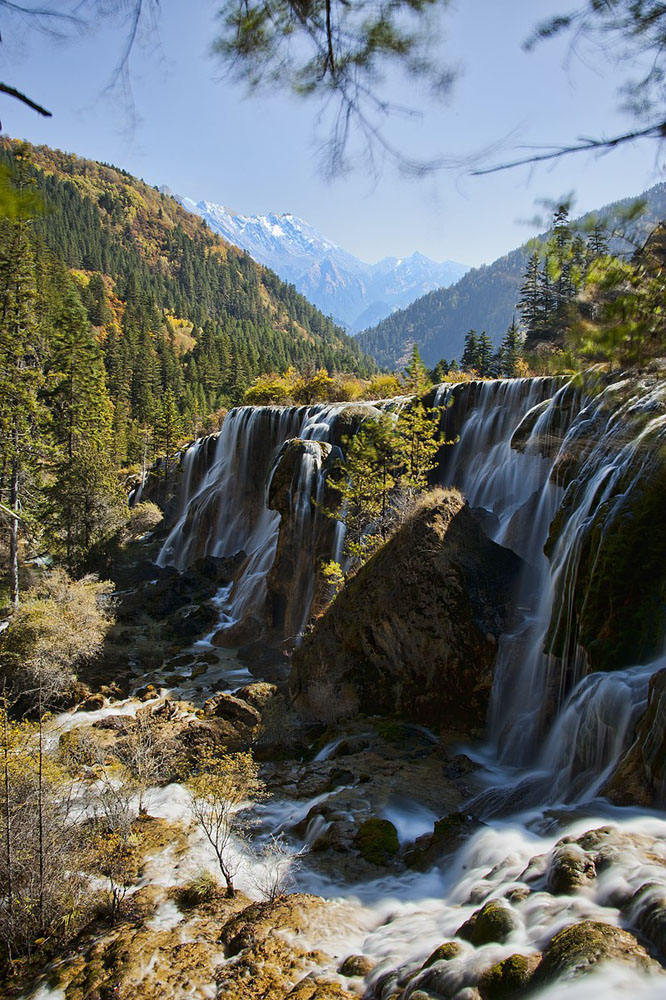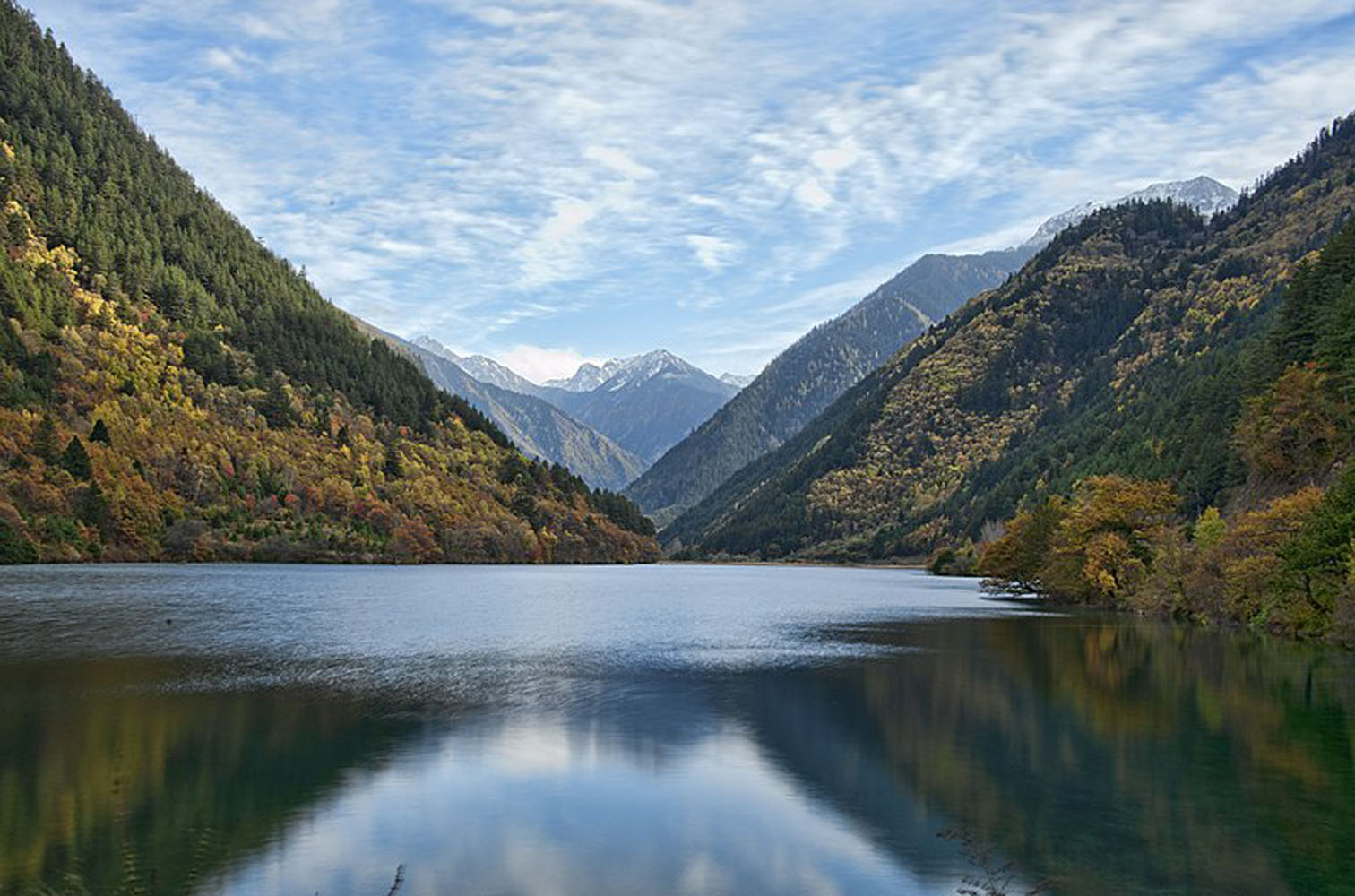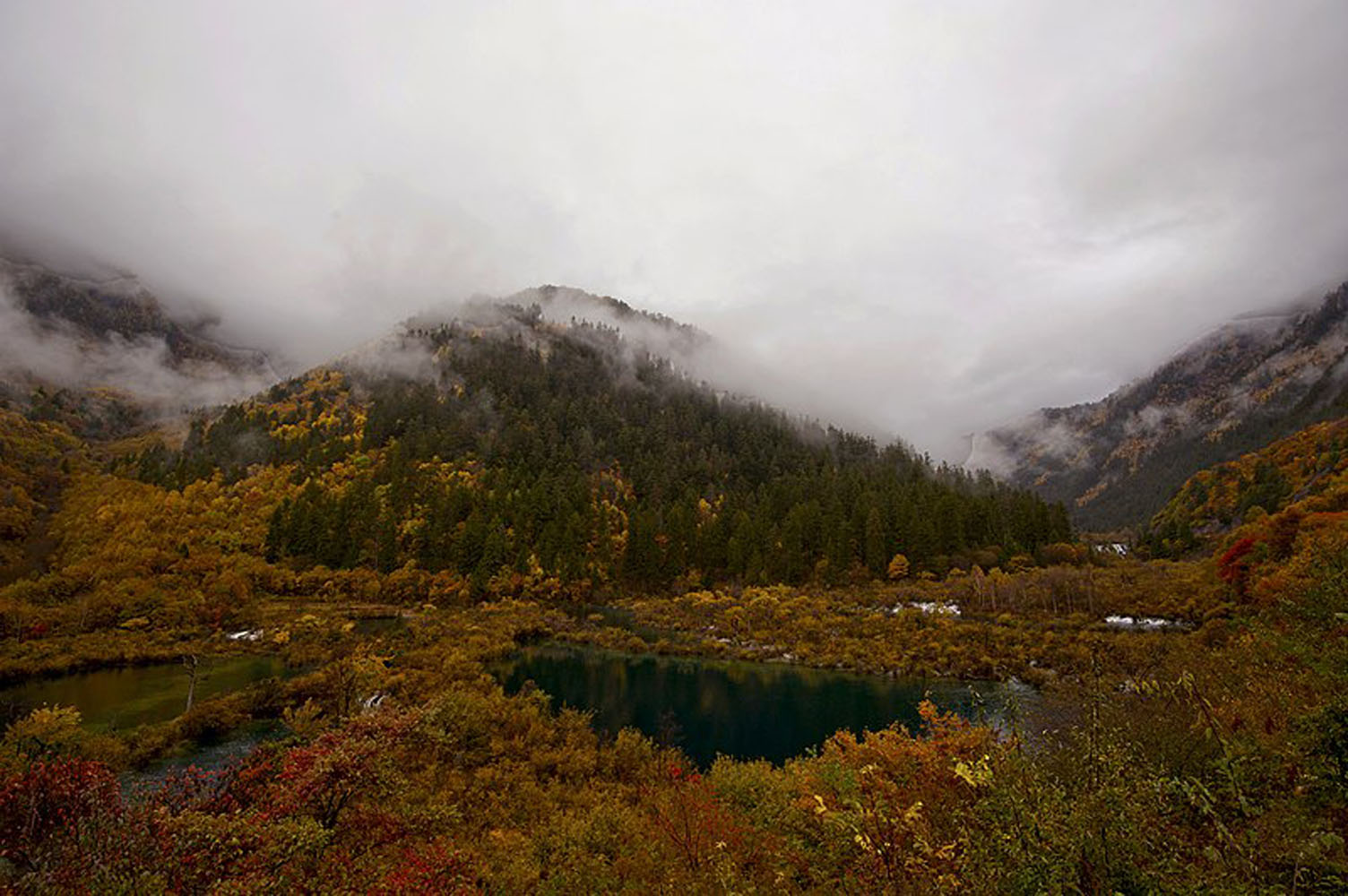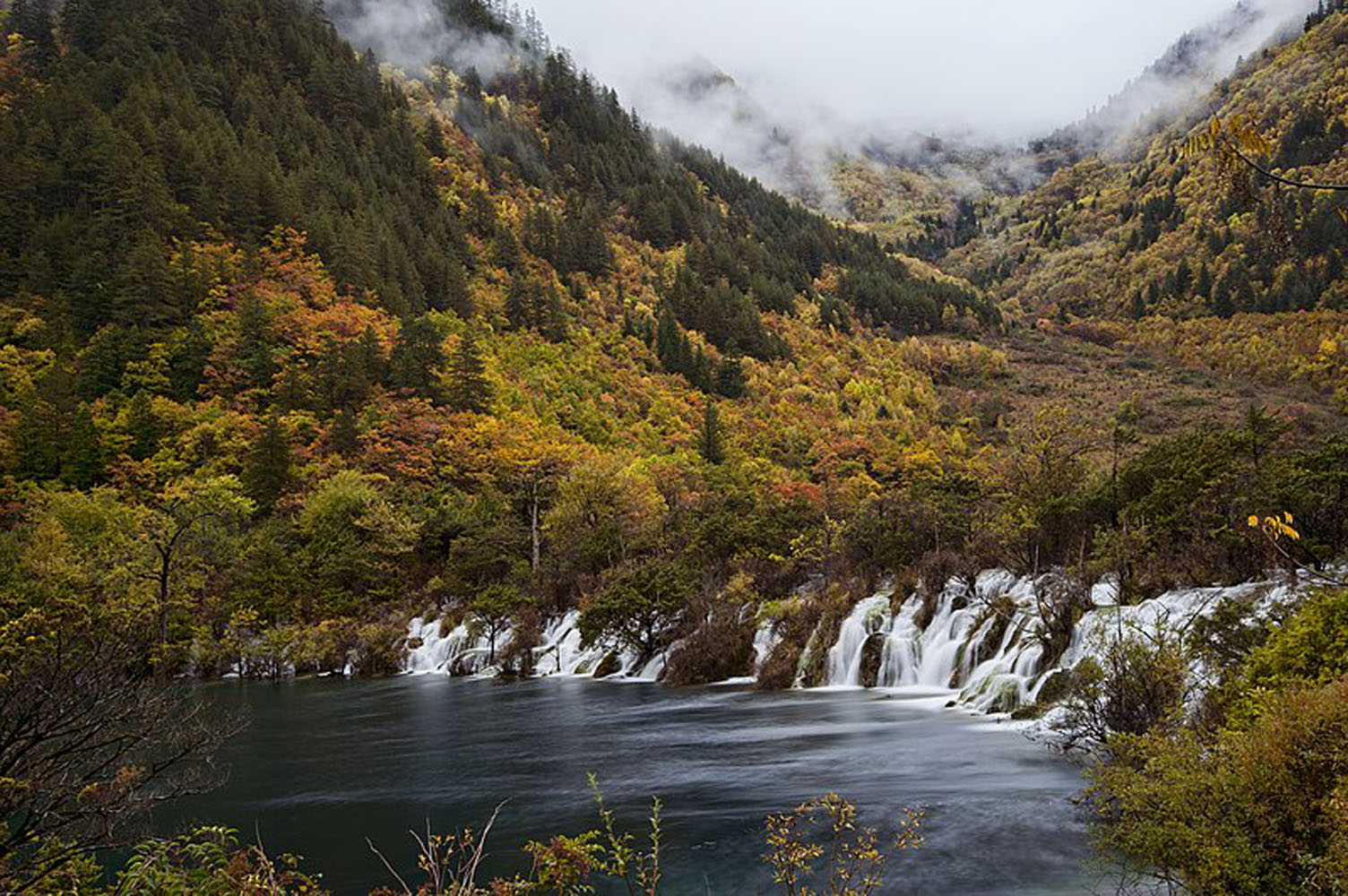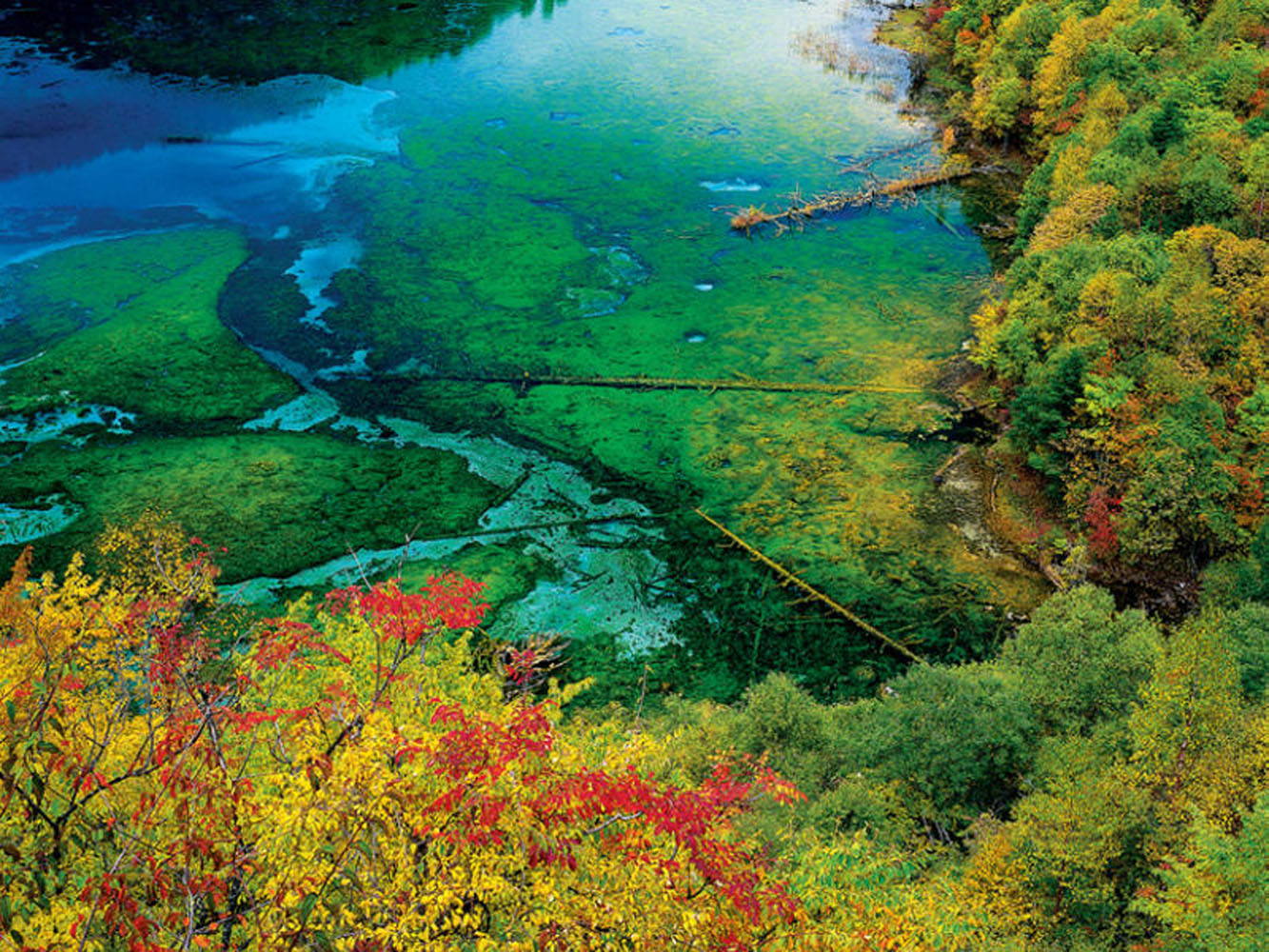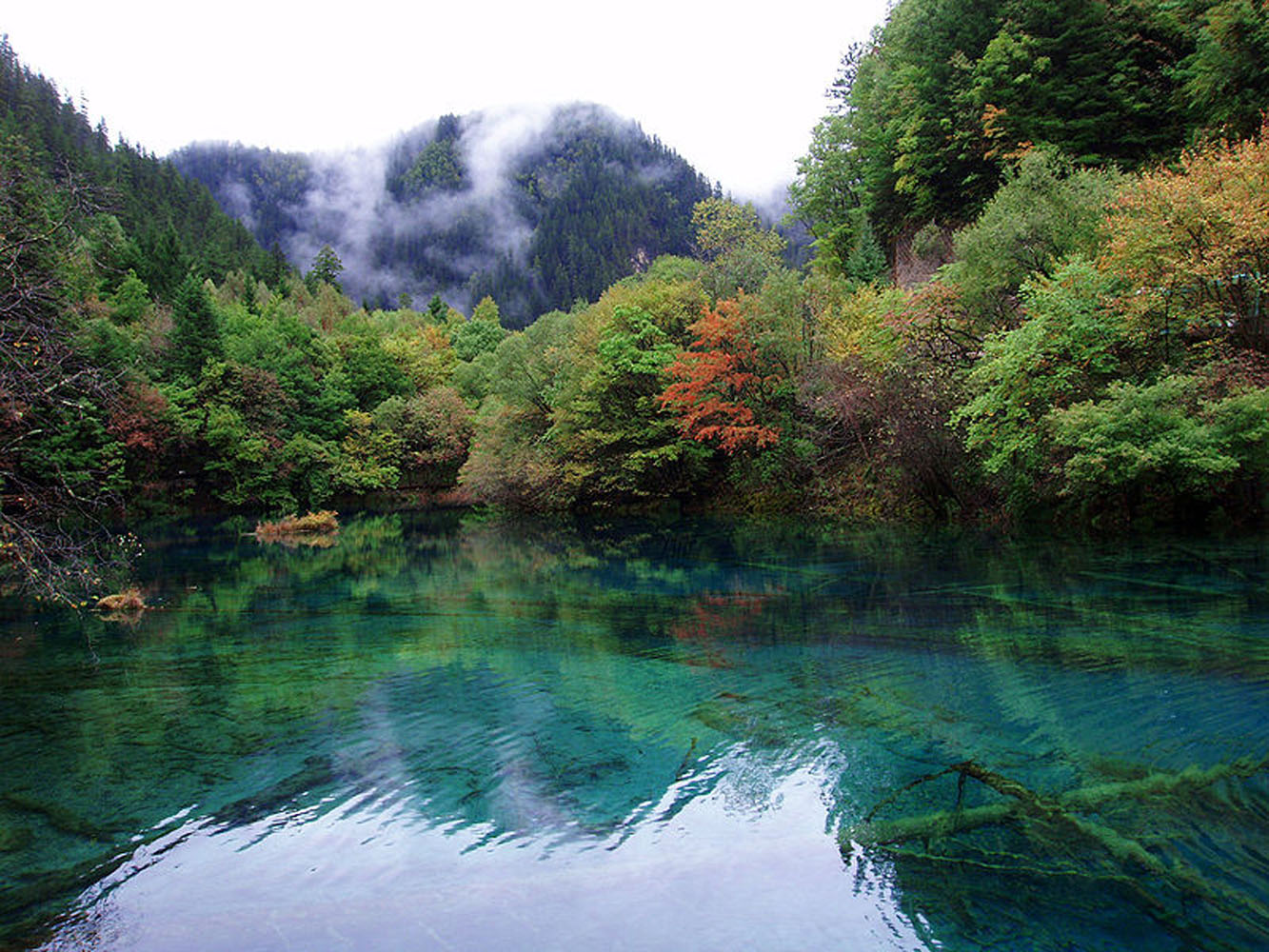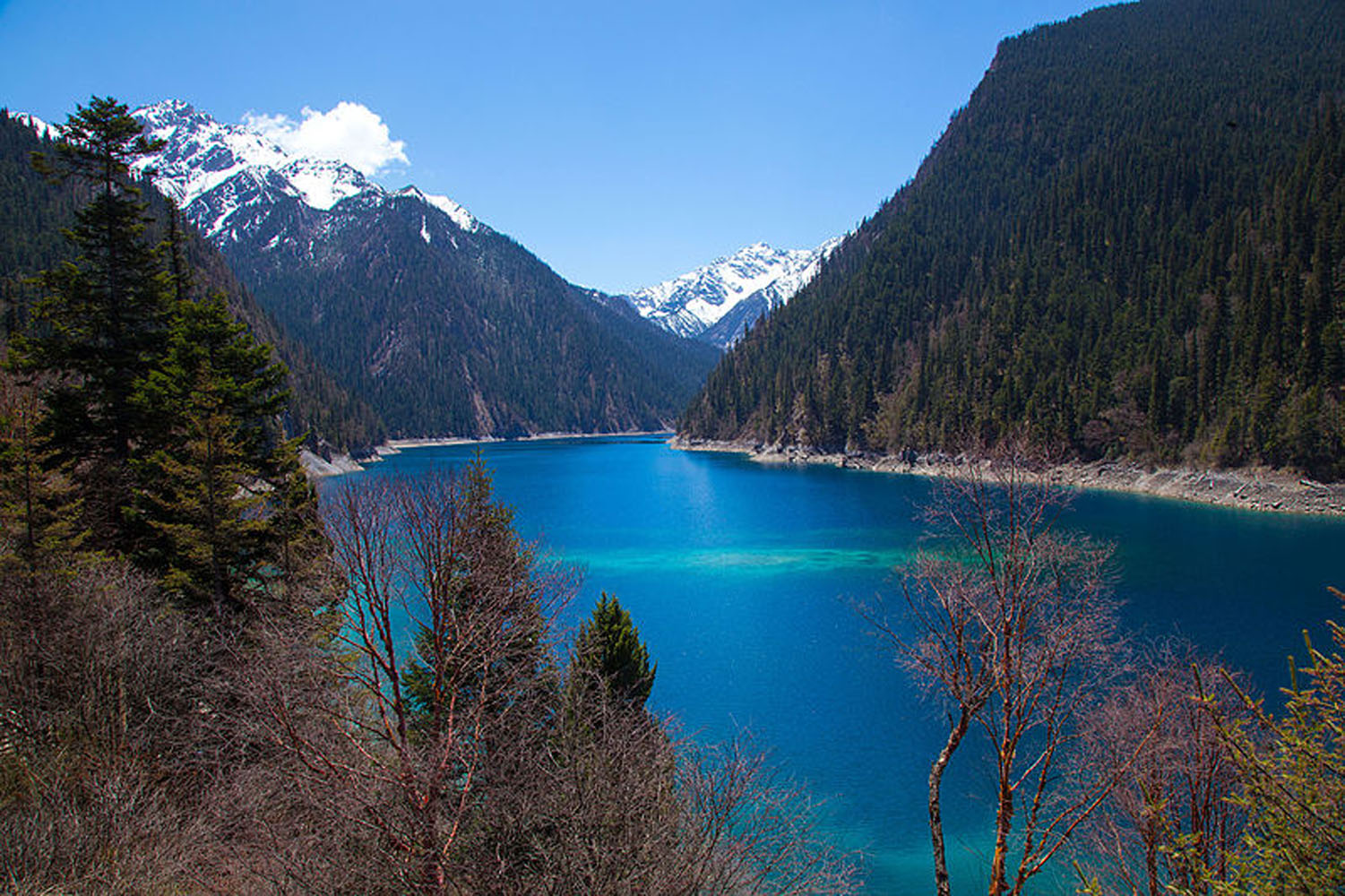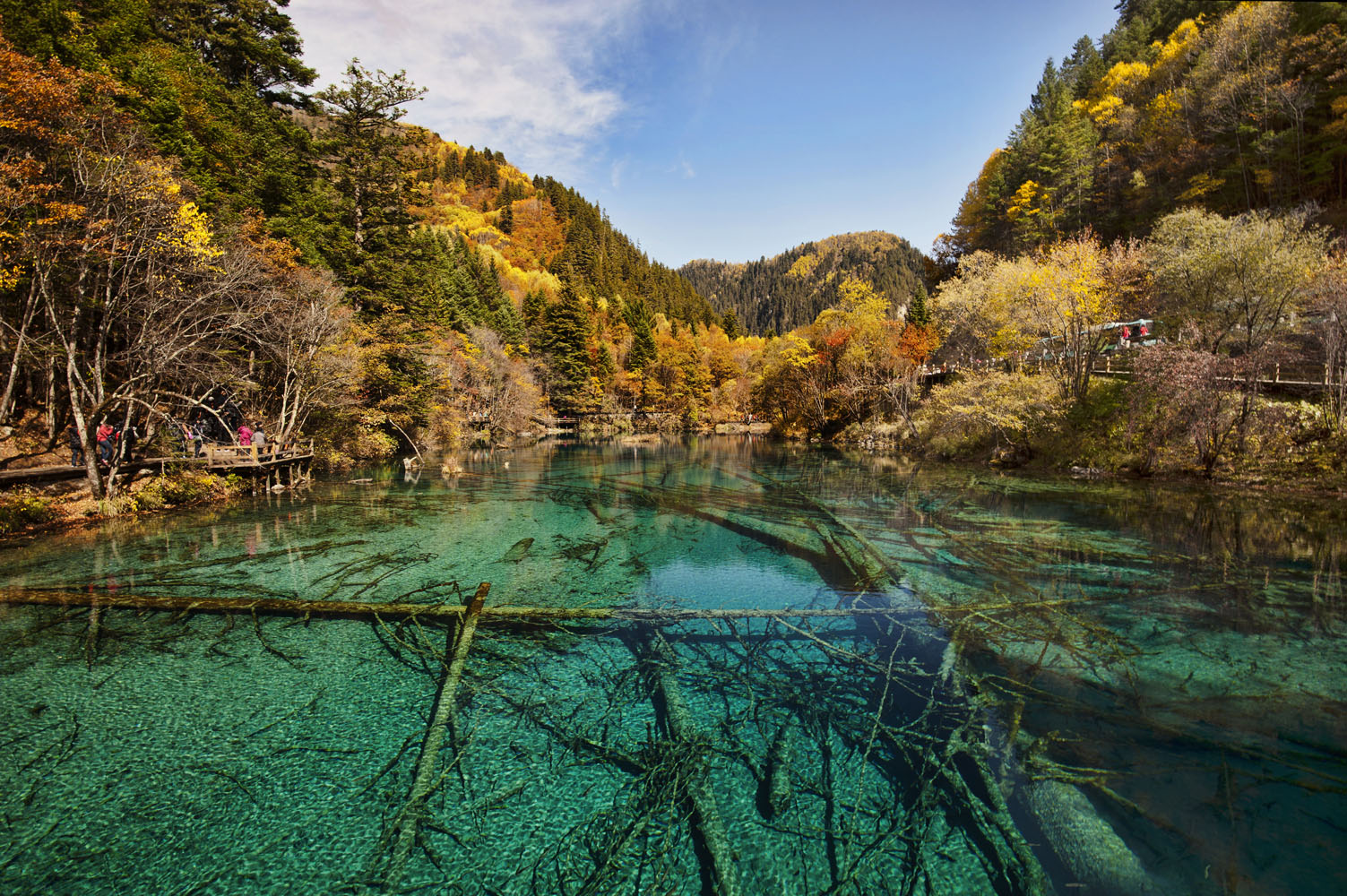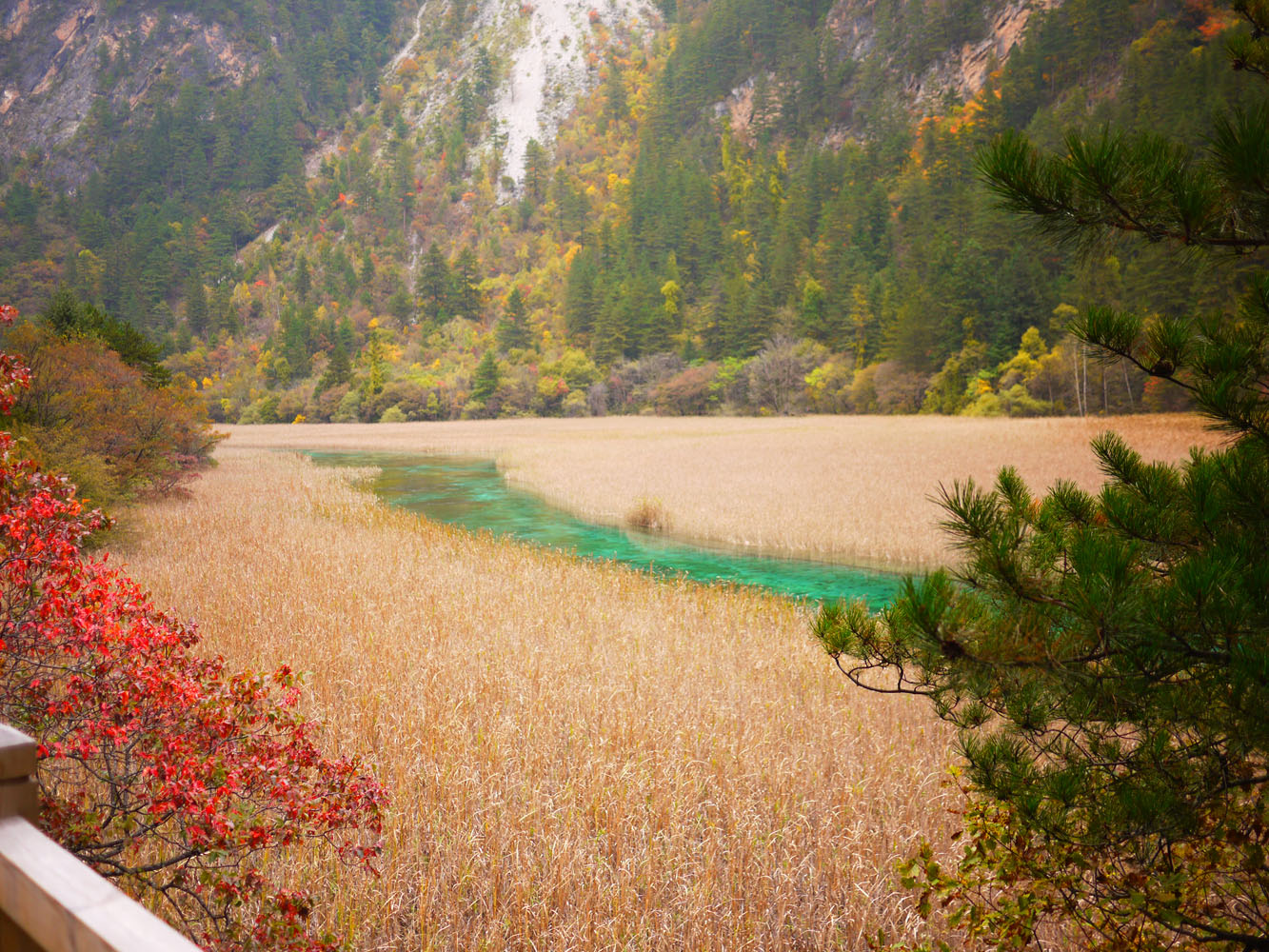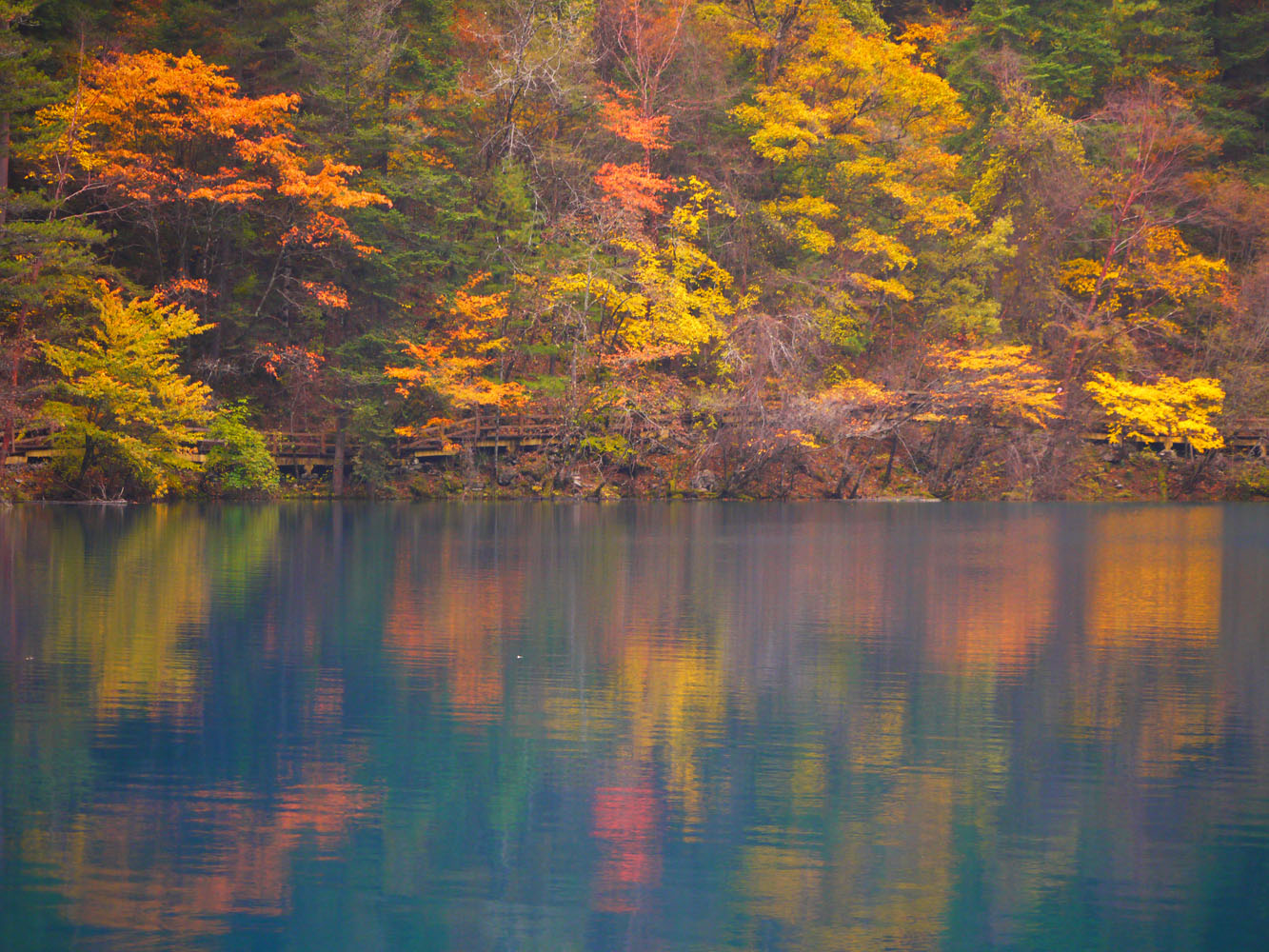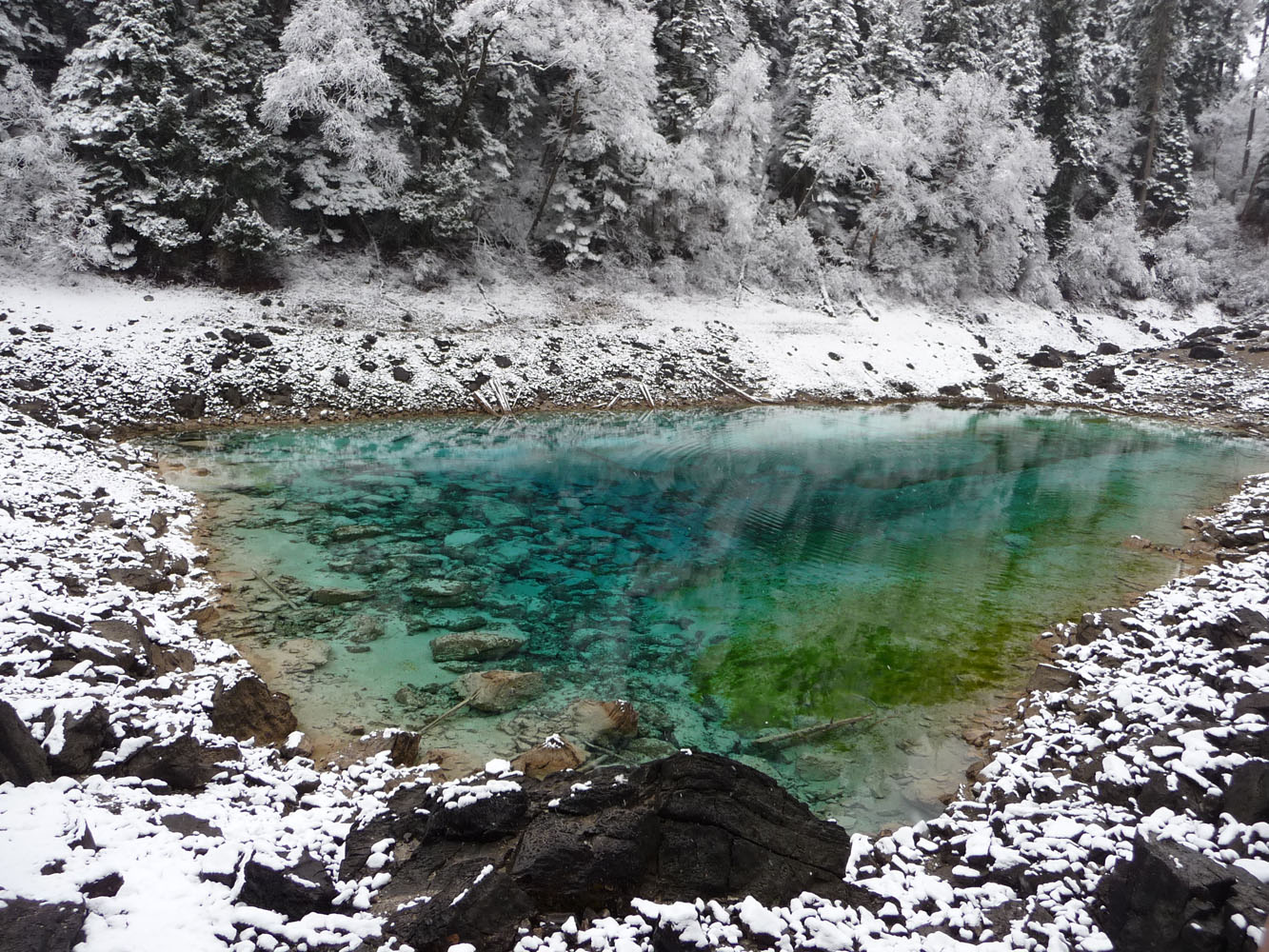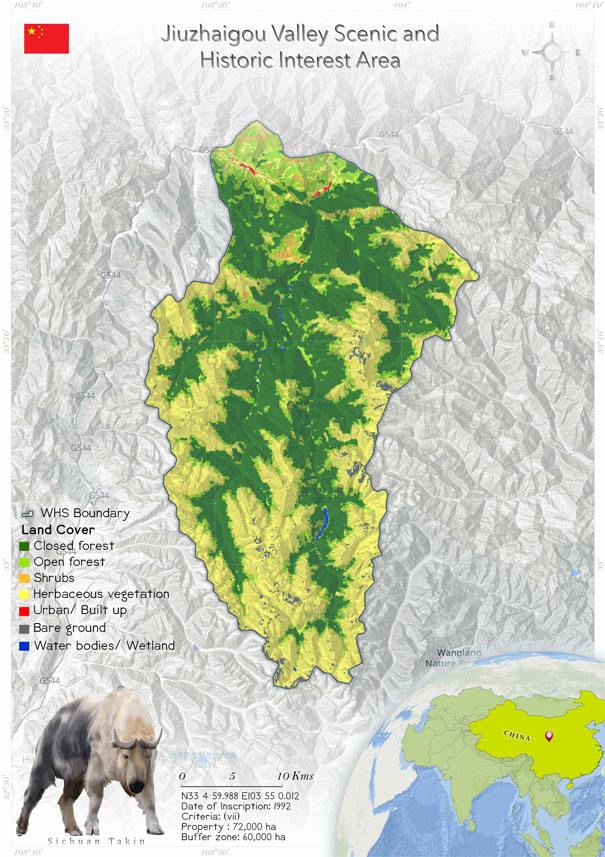
Jiuzhaigou Valley Scenic and Historic Interest Area (637)
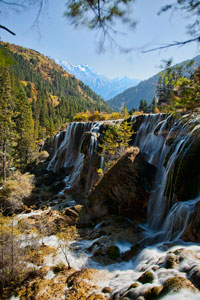 Inscribed as a UNESCO world natural heritage in 1992, Jiuzhaigou Valley Scenic and Historic Interest Area is a site with fairyland-like blue skies and colourful pools surrounded by diverse forests. With an extent of 72,000 ha, the site is located in Aba Tibetan and Qiang Autonomous Prefecture, north-west of Sichuan Province. Jiuzhaigou gets its name from the Chinese word “jiuzhai”, meaning nine villages. This is because of the nine old Tibetan villages near the site. The mesmerizing colourful pools and breathtaking landscape justify the Outstanding Universal Value of the scenic area and justify its inscription as a UNESCO world natural heritage site. The scenic site is a home of several endangered plant and animal species, including the giant panda (Ailuropoda melanoleuca) and Sichuan takin (Budorcas taxicolor tibetana). The spectacular and exceptional beauty of Jiuzhaigou Valley has made it a popular spot for ecotourism. As a result, the number of tourists has been increasing continuously. This has been great for the local economy; however, ever-increasing tourism is a considerable threat to the Outstanding Universal Value (OUV) of the heritage property. Introduction of alien species, tufa degradation, aquatic pollution, habitat degradation and exhaustion of the site’s carrying capacity are some of the negative impacts of mass tourism. Natural disasters, especially earthquakes, are also proving to be dangerous for the OUV of Jiuzhaigou Valley.
Inscribed as a UNESCO world natural heritage in 1992, Jiuzhaigou Valley Scenic and Historic Interest Area is a site with fairyland-like blue skies and colourful pools surrounded by diverse forests. With an extent of 72,000 ha, the site is located in Aba Tibetan and Qiang Autonomous Prefecture, north-west of Sichuan Province. Jiuzhaigou gets its name from the Chinese word “jiuzhai”, meaning nine villages. This is because of the nine old Tibetan villages near the site. The mesmerizing colourful pools and breathtaking landscape justify the Outstanding Universal Value of the scenic area and justify its inscription as a UNESCO world natural heritage site. The scenic site is a home of several endangered plant and animal species, including the giant panda (Ailuropoda melanoleuca) and Sichuan takin (Budorcas taxicolor tibetana). The spectacular and exceptional beauty of Jiuzhaigou Valley has made it a popular spot for ecotourism. As a result, the number of tourists has been increasing continuously. This has been great for the local economy; however, ever-increasing tourism is a considerable threat to the Outstanding Universal Value (OUV) of the heritage property. Introduction of alien species, tufa degradation, aquatic pollution, habitat degradation and exhaustion of the site’s carrying capacity are some of the negative impacts of mass tourism. Natural disasters, especially earthquakes, are also proving to be dangerous for the OUV of Jiuzhaigou Valley.
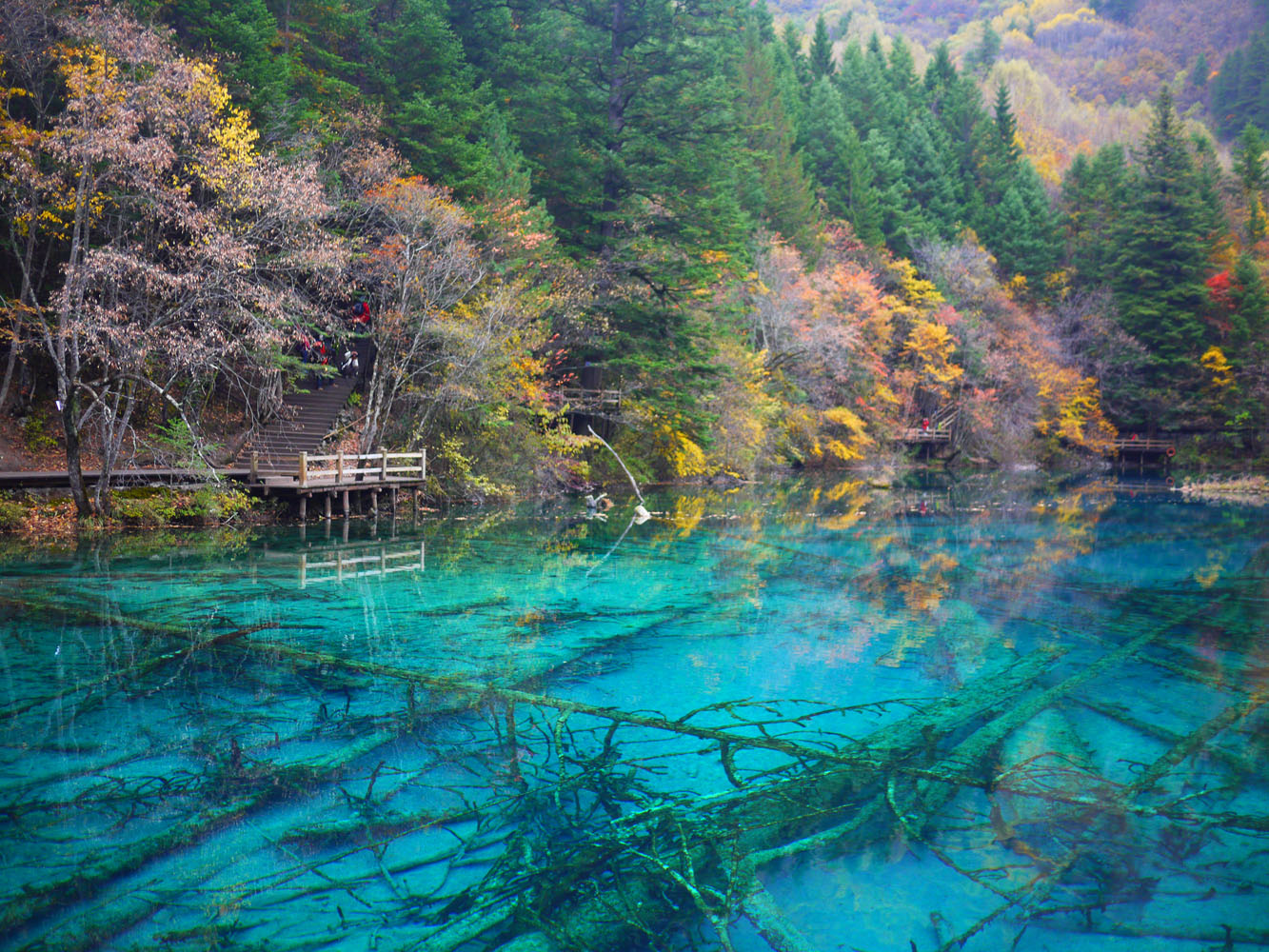 Jiuzhaigou Valley Scenic and Historic Interest Area located at (33°05' N, 103°55' E; northwestern Sichuan Province) the south of the Ga’erna Peak of the Minshan Mountains (Huadong G. 2013). Apart from being a UNESCO world natural heritage site (1992), the scenic and historic is a National Geopark, National Nature Reserve, National 5A and Key Scenic Spot and has been designated as a UNESCO Biosphere Reserve under UNESCO MAB program in 1997 (Du,J. et.al, 2018). The site is a celebrated tourist attraction for its unique tufa landscapes, karst formations, colorful lakes, shoals, waterfalls, rapids and a varied range of forest ecosystems. Most of the lakes are classic ribbon lakes and have calcium depositions. Some of the lakes are terraced; these are separated by tufa depositions forming travertine pools similar to the neighbouring UNESCO world natural heritage site, Huanglong Scenic and Historic Interest Area. Out of all these lakes, Five Flower Lake exhibits a unique feature; the lake never dries up in the dry season and never freezes in the icy cold winters (Huadong G. 2013). The valley is surrounded by cliffs, hills and mountains of different elevations ranging from 1,000 m to 5,000m. However, the Jiuzhaigou Valley is a congregation of three valleys including Rizegou, Shuzhenggou & Zechawa positioned as the English letter “Y” (Huadong G. 2013).
The forests of the scenic site supports plethora of unique flora and fauna. From 2,000m – 2,700m, the site is dominated by montane mixed forest, 2,700m – 3,500m is covered with cloud forests and subalpine forests are found at the elevation of 3,500, to 4,200m (anonymous, 2011). According a study by Winkler (1998) the lower zone is dominated by pines (Pinus armandii, P. tabulaeformis), oaks (Quercus aliena, Q. liotungensis and Q. baronii) and few remaining patches of Tsuga chinensis forests. The cloud forests are mixture of firs (Picea spp. and Abies spp.), birch (Betula albo-sinensis, B. utilis, B. platyphylla) and poplar (Populus rotundifolia, Populus davidiana). Abies faxoniana and Betula utilis with Juniperus convallium and Larix potaninii dominates the subalpine forests at high elevation. Other than these, about 2,500 plant species with more than 200 aquatic plant species are found in the site. The faunal diversity of the heritage site is also highly diverse; ranging from hog dear (Arctonyx collaris), porcupines (Hystrix brachyuran hodgsoni) to wild boars (Sus scrofa) (Urgenson, L., 2014) and has some internationally important species including Giant Panda (Ailuropoda melanoleuca), Golden Snub-Nosed monkey (Rhinopithecus roxellana), Red Panda (Ailurus fulgens), along with serow (Capricornis sumatraensis), Chinese gorals (Naemorhedus griseus), Sichuan takin (Budorcas taxicolor thibetana) (Anonymous, 2011). Along with this, the site also has a rich faunal diversity with 149 bird species, out of which 13 are listed as endangered.
Jiuzhaigou Valley Scenic and Historic Interest Area located at (33°05' N, 103°55' E; northwestern Sichuan Province) the south of the Ga’erna Peak of the Minshan Mountains (Huadong G. 2013). Apart from being a UNESCO world natural heritage site (1992), the scenic and historic is a National Geopark, National Nature Reserve, National 5A and Key Scenic Spot and has been designated as a UNESCO Biosphere Reserve under UNESCO MAB program in 1997 (Du,J. et.al, 2018). The site is a celebrated tourist attraction for its unique tufa landscapes, karst formations, colorful lakes, shoals, waterfalls, rapids and a varied range of forest ecosystems. Most of the lakes are classic ribbon lakes and have calcium depositions. Some of the lakes are terraced; these are separated by tufa depositions forming travertine pools similar to the neighbouring UNESCO world natural heritage site, Huanglong Scenic and Historic Interest Area. Out of all these lakes, Five Flower Lake exhibits a unique feature; the lake never dries up in the dry season and never freezes in the icy cold winters (Huadong G. 2013). The valley is surrounded by cliffs, hills and mountains of different elevations ranging from 1,000 m to 5,000m. However, the Jiuzhaigou Valley is a congregation of three valleys including Rizegou, Shuzhenggou & Zechawa positioned as the English letter “Y” (Huadong G. 2013).
The forests of the scenic site supports plethora of unique flora and fauna. From 2,000m – 2,700m, the site is dominated by montane mixed forest, 2,700m – 3,500m is covered with cloud forests and subalpine forests are found at the elevation of 3,500, to 4,200m (anonymous, 2011). According a study by Winkler (1998) the lower zone is dominated by pines (Pinus armandii, P. tabulaeformis), oaks (Quercus aliena, Q. liotungensis and Q. baronii) and few remaining patches of Tsuga chinensis forests. The cloud forests are mixture of firs (Picea spp. and Abies spp.), birch (Betula albo-sinensis, B. utilis, B. platyphylla) and poplar (Populus rotundifolia, Populus davidiana). Abies faxoniana and Betula utilis with Juniperus convallium and Larix potaninii dominates the subalpine forests at high elevation. Other than these, about 2,500 plant species with more than 200 aquatic plant species are found in the site. The faunal diversity of the heritage site is also highly diverse; ranging from hog dear (Arctonyx collaris), porcupines (Hystrix brachyuran hodgsoni) to wild boars (Sus scrofa) (Urgenson, L., 2014) and has some internationally important species including Giant Panda (Ailuropoda melanoleuca), Golden Snub-Nosed monkey (Rhinopithecus roxellana), Red Panda (Ailurus fulgens), along with serow (Capricornis sumatraensis), Chinese gorals (Naemorhedus griseus), Sichuan takin (Budorcas taxicolor thibetana) (Anonymous, 2011). Along with this, the site also has a rich faunal diversity with 149 bird species, out of which 13 are listed as endangered.
Criterion (vii)
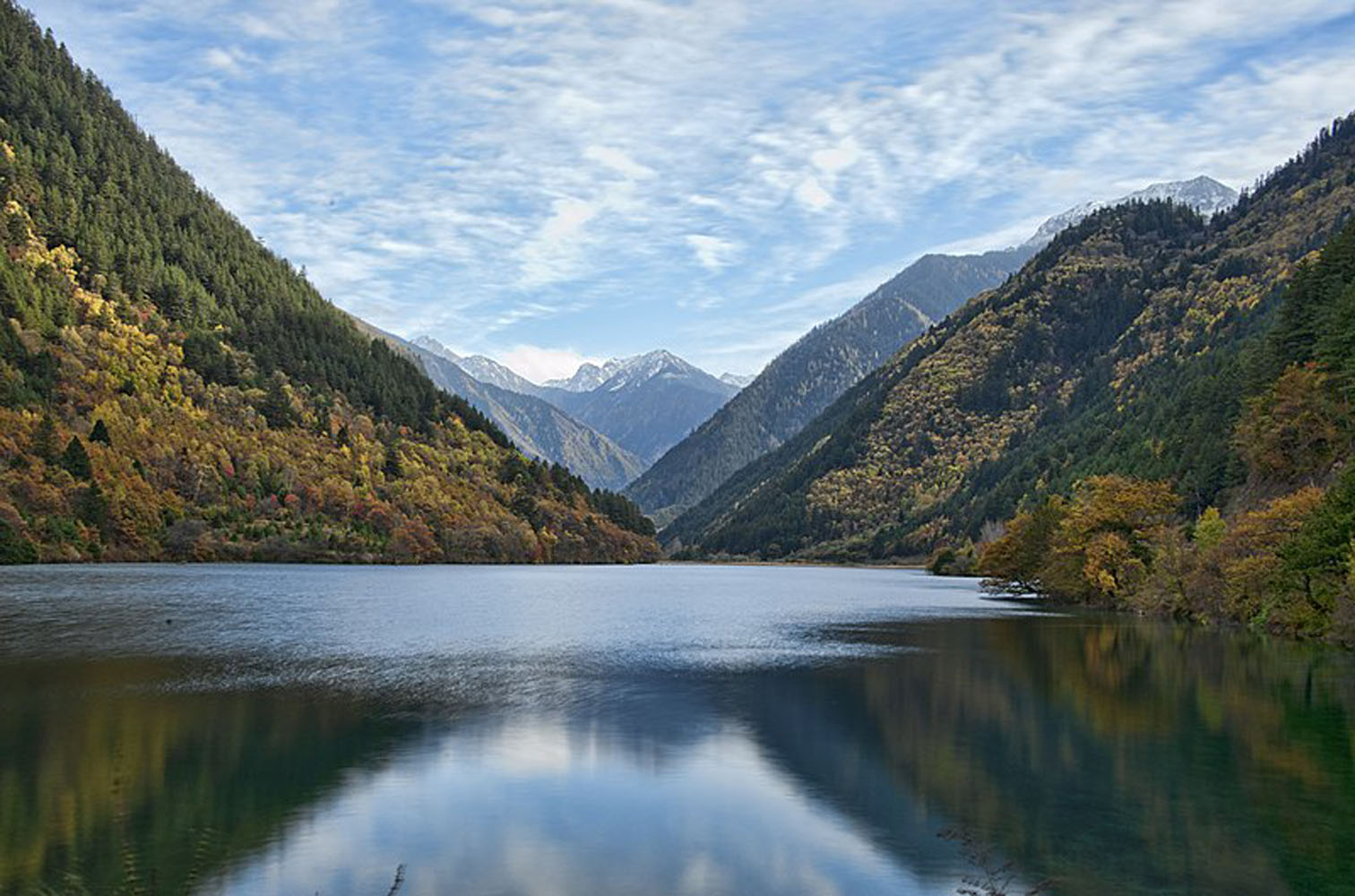 Jiuzhaigou is renowned for its scenic and aesthetic majesty. Its fairyland landscape of numerous lakes, waterfalls, and limestone terraces, with their attractive, clear, mineral-rich waters, set in the spectacular alpine mountains with a highly diverse forest ecosystem, demonstrates remarkable natural beauty.
Jiuzhaigou is renowned for its scenic and aesthetic majesty. Its fairyland landscape of numerous lakes, waterfalls, and limestone terraces, with their attractive, clear, mineral-rich waters, set in the spectacular alpine mountains with a highly diverse forest ecosystem, demonstrates remarkable natural beauty.
Status
 The Jiuzhaigou Valley Scenic and Historic Interest Area was inscribed as a World Heritage Site in 1992 for its spectacularly beautiful water bodies and breathtaking scenery. The aesthetic beauty of the heritage is unrivaled globally. On 8 August 2017, the Jiuzhaigou Valley was hit by a 7.0 magnitude earthquake. The disaster stimulated a lot of hazardous geological processes (including landslides and a dam break) (Zhao et al. 2018) and caused harm to the human population (175,000 and more) and livestock. Some of the infrastructure and attractions of the valley had either been severely damaged or destroyed (Lei et al. 2018). The valley has several lakes, waterfalls and other water bodies. These water bodies act as debris flow gullies. They are found across the whole valley and have been a grave threat to the natural scenic beauty of the site. The 2017 earthquake has caused an increase in the amount of debris-flow material, and it was found on the basis of the trends that a debris flow occurs continuously every 5–10 years. If the debris gets into the lakes, it will destroy the aesthetic beauty of the water bodies, and debris is also dangerous for the site’s infrastructure.
Besides the lichens, the aquatic ecosystem has also been altered due to tourism. Schizopygopsis kialingensis, a fish species found only in China, has not been spotted since 2004. An aquatic eidolon of the Tibetan people, the Songpan naked carp was once a dominant species in the lakes of Jiuzhiagou, but due to habitat alteration, it had a hard time surviving (Yuan 2012). Tufa degradation is another issue that the beautiful and mesmerizing waters of the valley are facing. An increased surge of tourists going inside the water pools to have good photos poses a huge threat to the tufa deposition inside the pools (Liu 2017).
The State of Conservation (SOC) Report (1998) indicated that the Jiuzhaigou Management Authorities effectively constrained the construction of hotels just outside the property. The World Heritage Committee also stated that the local people and the management are working together and have developed a balanced relationship to conserve the natural heritage property. The only issue found was poor management of mass tourism. An increased surge of tourists has been creating problems; the tourists are allowed to drive through the core of the property, and newer hotels are being built rapidly. The State Party has taken some significant steps to conserve the degrading Outstanding Universal Value and has been commended by the WHC. But still the WHC has asked the State Party to establish a “park-and-drive” system to limit the commuting of tourists in vehicles inside the property. The bureau also encourages the authorities to train the staff members of the site to monitor better and help tourists.
The Jiuzhaigou Valley Scenic and Historic Interest Area was inscribed as a World Heritage Site in 1992 for its spectacularly beautiful water bodies and breathtaking scenery. The aesthetic beauty of the heritage is unrivaled globally. On 8 August 2017, the Jiuzhaigou Valley was hit by a 7.0 magnitude earthquake. The disaster stimulated a lot of hazardous geological processes (including landslides and a dam break) (Zhao et al. 2018) and caused harm to the human population (175,000 and more) and livestock. Some of the infrastructure and attractions of the valley had either been severely damaged or destroyed (Lei et al. 2018). The valley has several lakes, waterfalls and other water bodies. These water bodies act as debris flow gullies. They are found across the whole valley and have been a grave threat to the natural scenic beauty of the site. The 2017 earthquake has caused an increase in the amount of debris-flow material, and it was found on the basis of the trends that a debris flow occurs continuously every 5–10 years. If the debris gets into the lakes, it will destroy the aesthetic beauty of the water bodies, and debris is also dangerous for the site’s infrastructure.
Besides the lichens, the aquatic ecosystem has also been altered due to tourism. Schizopygopsis kialingensis, a fish species found only in China, has not been spotted since 2004. An aquatic eidolon of the Tibetan people, the Songpan naked carp was once a dominant species in the lakes of Jiuzhiagou, but due to habitat alteration, it had a hard time surviving (Yuan 2012). Tufa degradation is another issue that the beautiful and mesmerizing waters of the valley are facing. An increased surge of tourists going inside the water pools to have good photos poses a huge threat to the tufa deposition inside the pools (Liu 2017).
The State of Conservation (SOC) Report (1998) indicated that the Jiuzhaigou Management Authorities effectively constrained the construction of hotels just outside the property. The World Heritage Committee also stated that the local people and the management are working together and have developed a balanced relationship to conserve the natural heritage property. The only issue found was poor management of mass tourism. An increased surge of tourists has been creating problems; the tourists are allowed to drive through the core of the property, and newer hotels are being built rapidly. The State Party has taken some significant steps to conserve the degrading Outstanding Universal Value and has been commended by the WHC. But still the WHC has asked the State Party to establish a “park-and-drive” system to limit the commuting of tourists in vehicles inside the property. The bureau also encourages the authorities to train the staff members of the site to monitor better and help tourists.
